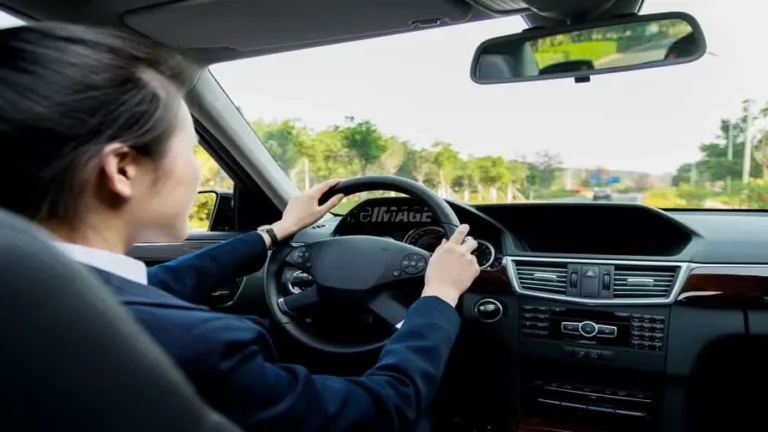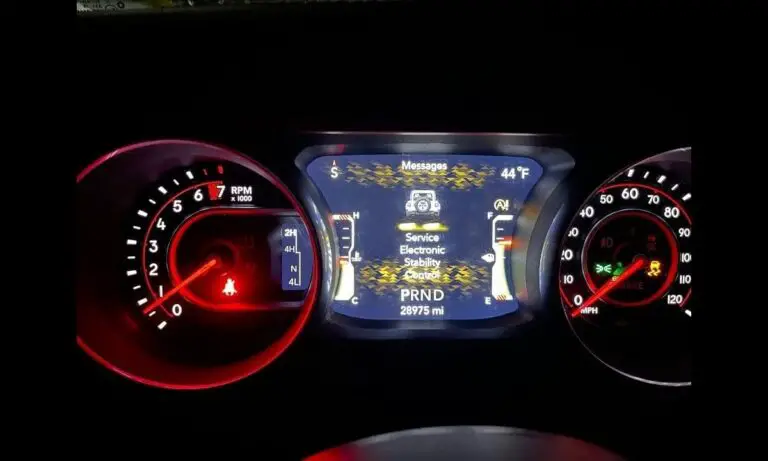Jeep Grand Cherokee SRT vs Trackhawk: Which is Better?

If you’re looking for a high-powered, high-performance SUV that can hold its own against some of the world’s best sports cars, two models you should consider are the Jeep Grand Cherokee SRT and the Jeep Grand Cherokee Trackhawk. Both offer incredible acceleration, sporty handling, and opulent interiors wrapped in an aggressive yet refined exterior styling.
But what exactly sets the Trackhawk apart from the SRT, and how do you decide which of these American performance SUVs best fits your needs?
The main differences come down to the engine, power specs, pricing, and certain styling cues. The Trackhawk is more powerful, faster, and more expensive, while the SRT offers a great balance of power and value.
This in-depth comparison will look closely at the performance, interior features, pricing, and other key factors to help you decide between the Jeep Grand Cherokee SRT vs Trackhawk. Specific aspects covered include:
- Powertrain and performance specs
- Acceleration, speed, transmission, and handling
- Interior features, technology, and comfort
- Pricing, fuel economy, and value
- Pros and cons of each model
- Recommendations for different types of buyers
Let’s rev up and take a deep dive into how the Jeep Grand Cherokee SRT and Trackhawk models compare!
Table of Contents
High-Performance Powertrains
The most significant difference between the SRT and Trackhawk lies under the hood. The Trackhawk has a 6.2L supercharged V8 pumping out a monstrous 707 horsepower and 645 lb-ft of torque. The SRT packs a naturally aspirated 6.4L V8 making a still-impressive 475 horsepower and 470 lb-ft of torque.
Both Jeep performance SUVs come paired with a TorqueFlite 8-speed automatic transmission powering all four wheels. The SRT utilizes a single exhaust while the Trackhawk sports dual exhaust pipes.
Clearly the Trackhawk boasts the more powerful engine specs, though some drivers may find the SRT offers a better balance of power and efficiency. We’ll see how the performance numbers stack up next.
Acceleration, Speed, and Handling
The Trackhawk’s supercharged V8 enables physics-defying acceleration and speed for a full-size SUV tipping the scales at over 5,300 lbs. This Jeep rockets from 0-60 mph in just 3.5 seconds compared to 4.5 seconds for the SRT. The quarter mile passes in 11.6 seconds for the Trackhawk.
Top speed in the Trackhawk stands at 180 mph, an astonishing velocity reached through 6th gear in this 8-speed transmission. The SRT peaks at 175 mph. Both top speeds are electronically limited.
Launch control comes standard in the Trackhawk to optimize powerful standing starts. A torque reserve function provides extra power during hard launches. The SRT lacks both of these Trackhawk-exclusive features.
Around corners, the Trackhawk leans more heavily on its adaptive damping suspension to control body roll compared to the SRT. But both Jeep SUVs handle impressively well at speed thanks to all-wheel drive grip and sport-tuned suspensions. The steering feels precise and responsive when pushed hard.
While the SRT falls slightly behind the Trackhawk in outright speed and acceleration, it remains a stellar performer able to outpace many sports cars. The Trackhawk simply operates on another level reserved for only the most extreme supercars.
Similar Luxury Interiors with Unique Styling Cues
Step inside the cabin and you’ll be surrounded by premium soft-touch surfaces, leather seats, and the latest infotainment tech – with a few key styling differences between the models.
Seating capacity stands at 5 in both the SRT and Trackhawk. The rear bench fits three across.
Cargo volume behind the rear seats measures 36.3 cubic feet in the SRT and 37.5 cubes in the Trackhawk. Both provide plenty of storage for gear, groceries, or luggage. The 60/40 split folding rear seats allow you to haul even more when needed.
The clean, modern dashboard design houses a 8.4-inch touchscreen in both models, running FCA’s easy-to-use Uconnect infotainment interface. You’ll have full access to Apple CarPlay and Android Auto smartphone integration. A 7-inch driver information display sits front and center in the gauge cluster.
Higher trims of both SRT and Trackhawk models offer a fantastic 19-speaker Harman Kardon sound system that cranks out vivid, powerful audio. You can fine-tune the sound profile and enjoy surround sound technology for an immersive listening experience.
Heated and ventilated front seats with power adjustments help dial in your ideal position, while heating the leather in winter and cooling when it’s hot out.
Dual-zone automatic climate control lets the driver and front passenger select their preferred temperature, while those in the back seat get air vents to stay comfortable.
You’ll find a number of convenience features shared between SRT and Trackhawk models as well. These include:
- Dual pane panoramic sunroof
- Power liftgate
- Remote start system
- Push button start
- Rain sensing wipers
- Auto-dimming rearview mirror
Where the SRT and Trackhawk diverge in cabin design are the unique styling touches that reflect each model’s performance capabilities.
The Trackhawk interior stands out with its metal-plated “Trackhawk” door sills and special badging throughout. The seats have Trackhawk logos stitched into the leather.
The overall aesthetic skews more high-tech and performance focused. Carbon fiber accents dress up the dashboard, doors, and center console.
By contrast, the SRT interior leans slightly more upscale and luxury focused in its styling cues, befitting the Grand Cherokee’s do-it-all nature. You get a blend of metal trim and real wood accents.
The seats sport unique SRT embroidery and piping. The leather wrapped SRT steering wheel integrates drive mode controls.
Both models deliver premium, driver-focused interiors packed with comfort, technology, and style. The Trackhawk amps up the performance touches, while the SRT serves up luxury with its unique high-end details.
Pricing and Fuel Efficiency
The 2023 Jeep Grand Cherokee SRT starts at $67,000 MSRP, while the Trackhawk comes in around $86,000. That’s a difference of about $19,000 between the models.
Given its supercharged V8 and more robust cooling systems, the Trackhawk will be more expensive to insure as well.
Fuel economy predictably skews lower in the high-powered Trackhawk. It’s rated for 12 mpg city, 17 mpg highway, and 14 mpg combined. The SRT returns 13 city, 19 highway, and 15 combined mpg.
So you’ll spend quite a bit more to buy and feed the Trackhawk. But for some buyers seeking ultimate performance, the extra expense will be well worth it. The SRT delivers strong acceleration and speed at a more attainable price point.
Key Pros and Cons
To summarize some of the trade-offs:
Jeep Grand Cherokee Trackhawk
Pros:
- Supercharged 6.2L V8 provides crazy 707 hp power
- Reaches 60 mph in just 3.5 seconds
- Top speed of 180 mph
- Unique performance design touches
- Head-turning styling and presence
Cons:
- Much more expensive to buy
- Lower fuel economy ratings
- Overkill for some drivers
Jeep Grand Cherokee SRT
Pros:
- Great balance of power and efficiency
- 0-60 in 4.5 seconds is still quick
- Saves $19,000+ over Trackhawk
- Luxury focused interior details
Cons:
- 475 hp isn’t as beastly as Trackhawk
- Can’t hit quite as high speeds
- Some may want more exclusivity
Which High-Power Jeep is Right for You?
So when all is considered, which version of Jeep’s high-po Grand Cherokee ends up the right choice?
Here are some recommendations based on different buyer priorities:
- The Jeep Grand Cherokee Trackhawk is the ultimate pick for drivers who want supercar-rivaling speed and acceleration without compromising SUV utility and luxury. If you want to experience over 700 horsepower in a 4×4 package, it’s the obvious choice.
- For those who love the idea of a performance SUV but don’t need the top-tier power, the Jeep Grand Cherokee SRT brings fantastic bang-for-the-buck. You still get head-snapping acceleration and athrilling top speed around $20,000 less than the Trackhawk.
- Buyers who plan to daily drive their performance Jeep may prefer the SRT for its slightly better fuel efficiency. The Trackhawk is thirstier thanks to its supercharged V8.
- Families should lean toward the SRT for its more flexible cargo space and seating. The Trackhawk prioritizes performance over passenger practicality.
- Shoppers wanting a more exclusive performance SUV can opt for the pricier Trackhawk. With lower production numbers, it will stand out from the crowd more than the popular SRT model.
At the end of the day, you really can’t go wrong with either of these amazing high-powered Jeep SUVs. Both deliver incredible acceleration and handling wrapped in a practical package. It just comes down to deciding if the Trackhawk’s otherworldly power and exclusivity is worth the significant price premium over the SRT.
Whichever you choose, tighten up your seatbelt and get ready for a fast and furious ride!
Take the Wheel Yourself
The only way to truly appreciate the differences between Jeep’s Grand Cherokee SRT and Trackhawk models is to take them both for a spin yourself.
Get behind the wheel at your local Jeep dealership. Feel the relentless thrust of acceleration, hear the roar of the engines, and carve some corners to experience the athletic handling abilities.
Once you’ve tested the limits of both performance SUVs, you’ll have all the data you need to decide if the SRT or Trackhawk is the right Jeep Grand Cherokee to park in your driveway. Both are incredible rides – now it’s just a matter of choosing your favorite flavor of speed, power, and driving excitement!






